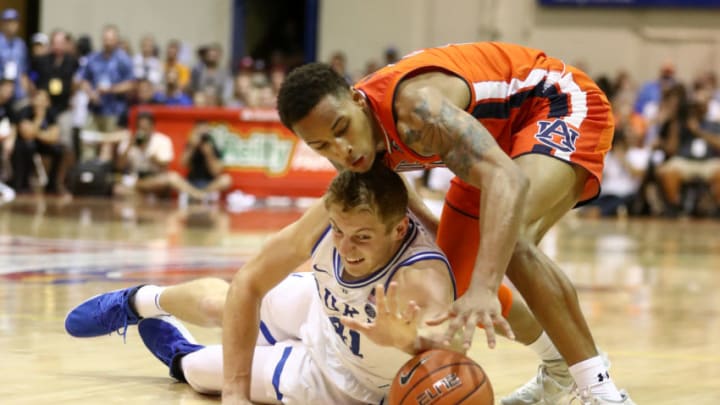This Duke basketball season may end as pretty as it started if the Blue Devils get back to what they did prettiest at the start: using in-your-face defense to generate takeaways that lead to spectacular passes and confidence-boosting finishes.
Not only do steals lead to instant transition opportunities, but they often lead to the type of fast breaks with the greatest numbers advantage — you know, the ones that often end with the world’s boldest exclamation point: a dunk by Duke basketball freshman Zion Williamson.
More times than not, after the steal but before the slam, whether by Williamson or another of the supremely athletic Blue Devils, there is an alley-oop pass or some other eye-pleasing assist.
Either way, this type of transition play is the most effective at igniting the energy level of the team while extinguishing hopes of the opponent.
More from Ball Durham
- Duke basketball: The architect behind digital dominance
- Duke basketball prioritizing frontcourt prospects in 2025
- Duke basketball: Unmasking the hate for the Blue Devils
- Duke basketball: Countdown to Craziness lands another huge visitor
- Duke basketball fills final open scholarship
And these plays end up beautifying the team’s stat sheet, particularly in the columns for steals, assists, and turnovers. The steals and assists, as explained above, go hand in hand; as for Duke’s turnovers, they typically show their ugly face less often after the team benefits from boosts in confidence and in-the-zone sharp play that come from playing beautiful fast-break basketball.
Steals. Assists. Limited Turnovers. Mixing those three ingredients forms the secret sauce for this crop of Duke basketball players.
That sauce was the sweetest when the team began the season by shellacking then-No. 2 Kentucky, 118-84, in Indianapolis. The Blue Devils had 10 steals, 22 assists, and four turnovers.
Not too shabby.
That sauce was still plenty sweet in blowout wins at home over Army and Eastern Michigan. Against the Black Knights, the Blue Devils had eight steals, 24 assists, and 12 turnovers. Against the Eagles, they had 14 steals, 23 assists, and 11 turnovers.
Across the first three games, Duke was averaging 10.7 steals, 23.0 assists, and 9.0 turnovers.
About as good as it gets.
And then came the Maui Invitational. And with it came a noticeable drop in the consistent levels of intensity and sharp play by the Blue Devils. In fact, across the three games that ended with an 89-87 loss to now-No. 1 Gonzaga, the team not once had more assists than turnovers — a trend that never works out too well in the long run.
Duke averaged 6.0 steals, 11.0 assists, and 12.7 turnovers for the tournament.
Yuck.
Sure, the trip to Maui included an overall higher level of competition than the first three games — but not actually by all that much.
Again, the difference seemed to mostly lie in the team’s energy level on defense. The Blue Devils didn’t press as often, didn’t anticipate and jump into passing lanes as often, and therefore didn’t end up passing and dunking in transition as often.
As laid out in an article here at Ball Durham back in September, these freshmen-laden Blue Devils will likely have to at least flirt with the program’s all-time record for steals per game — 10.5 by the 2000-01 squad that ended its season with pieces of net in hand — in order to fully take advantage of their athletic prowess in transition.
Hopefully, reversing the recent slide in steals and the team’s assist-to-turnover ratio will start tonight when Duke hosts Indiana in Cameron Indoor Stadium at 9:30 p.m. on ESPN.
Because if these columns in the stat sheet for each of the Blue Devils’ remaining games look similar to the first three games, the team will have its best shot at not having to play its final game until April 8 in Minneapolis.
